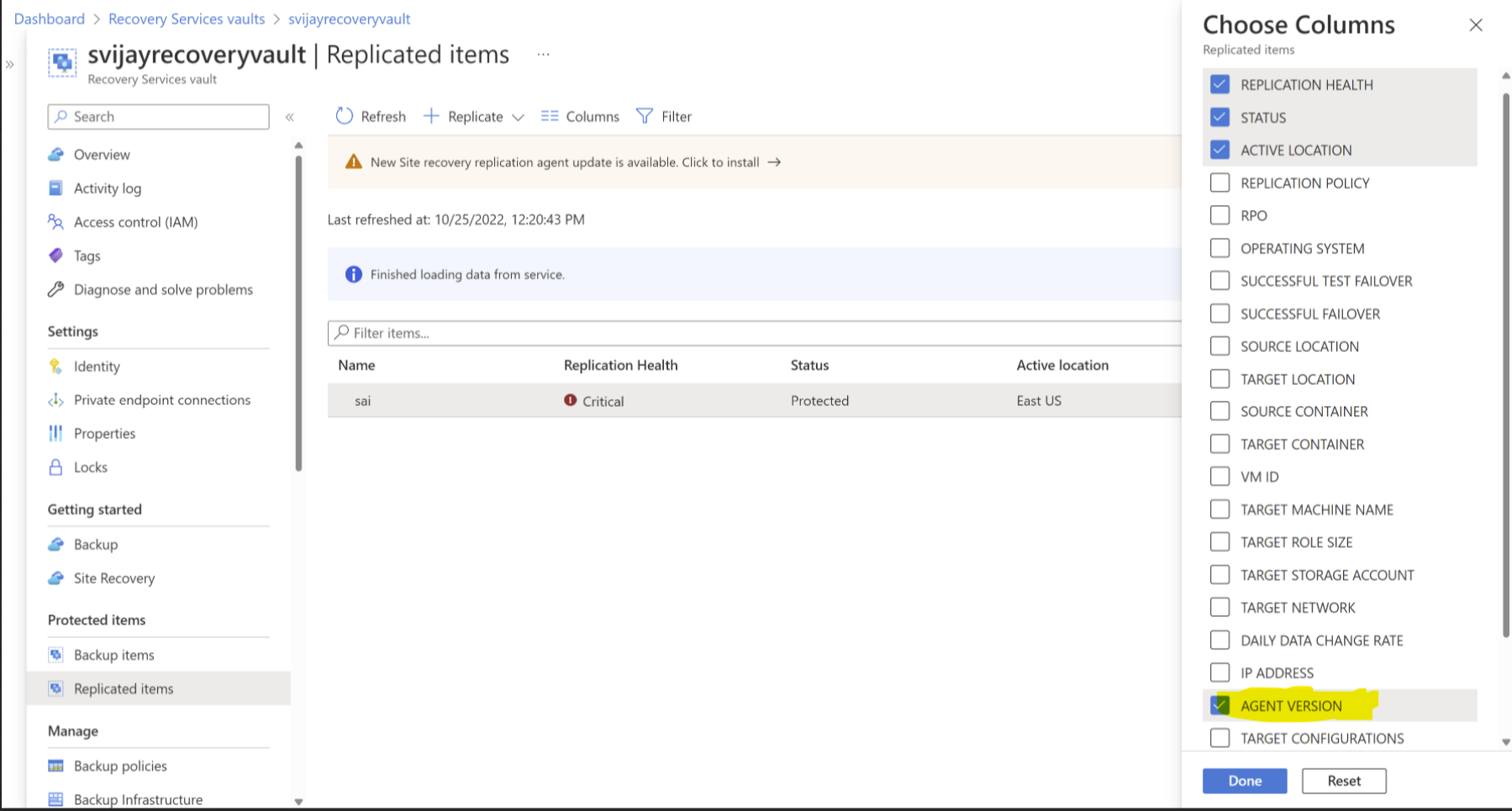Hello @OzDownUnder ,
Thanks for providing your valuable feedback on this thread. We value your input, and that is why here is some additional information that I would like to share with you on your query which will help you resolve your doubt. Please take a look at the below and let us know if this information helps you, and also if you need and further details.
In general if you are doing azure to azure replication and auto update is not enabled, then every time there is a new agent version available, you will be notified through a banner on the portal, under the Vault as mentioned in this doc Automatic update of the Mobility service in Azure Site Recovery - Azure Site Recovery | Microsoft Learn
When you click on that banner, it shows all the VMs that needs upgrade as shown below.

Another way would be by adding the column to show the agent version of listed replicated items under vault like this.

As far as I know, there is no direct way to do this via PowerShell.
Hope this helps you. Do let us know by replying to this thread. Thank you.
--------------------
If you find the above information helpful, please "Accept as Answer" for the benefit of the community.

